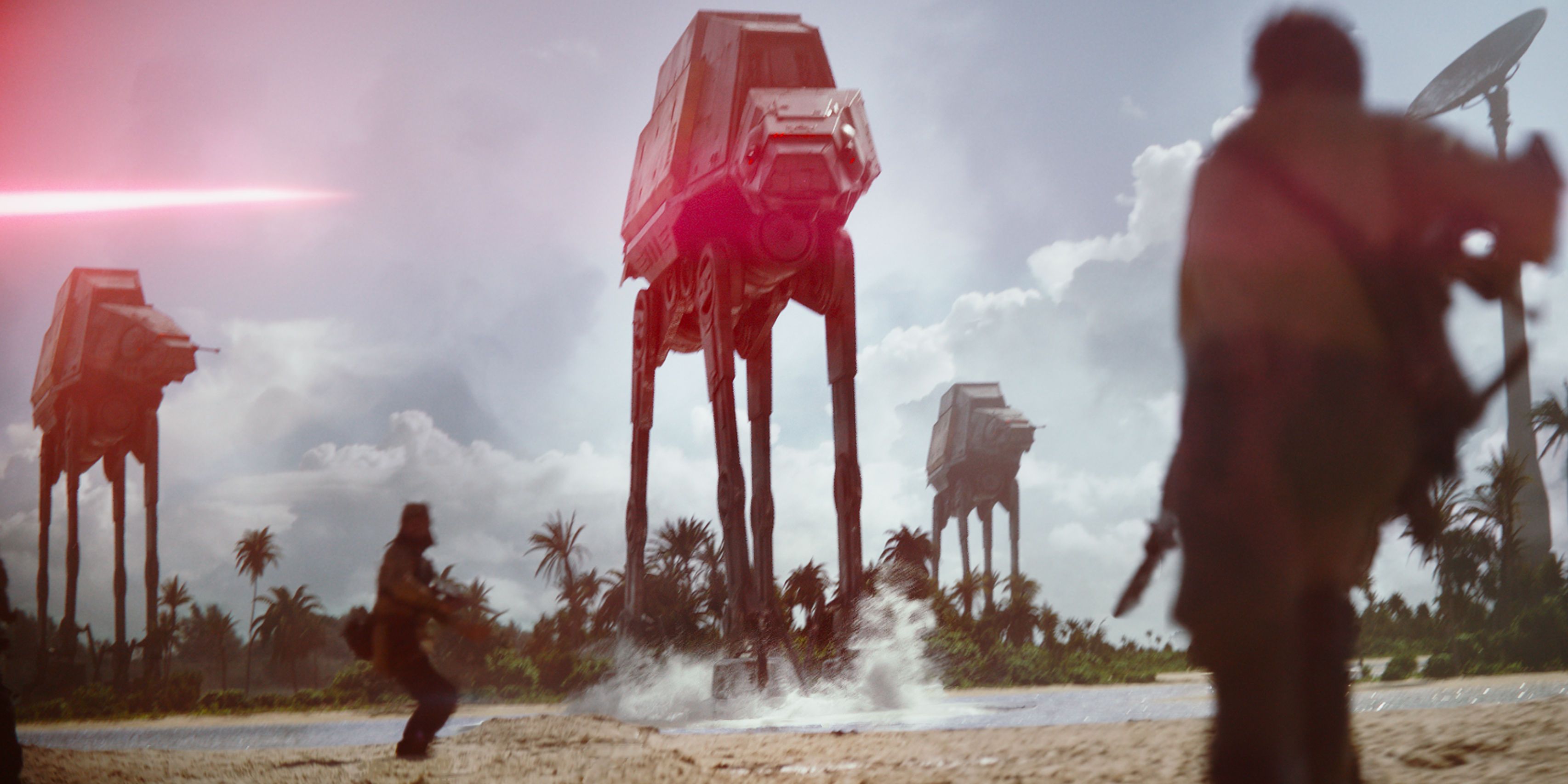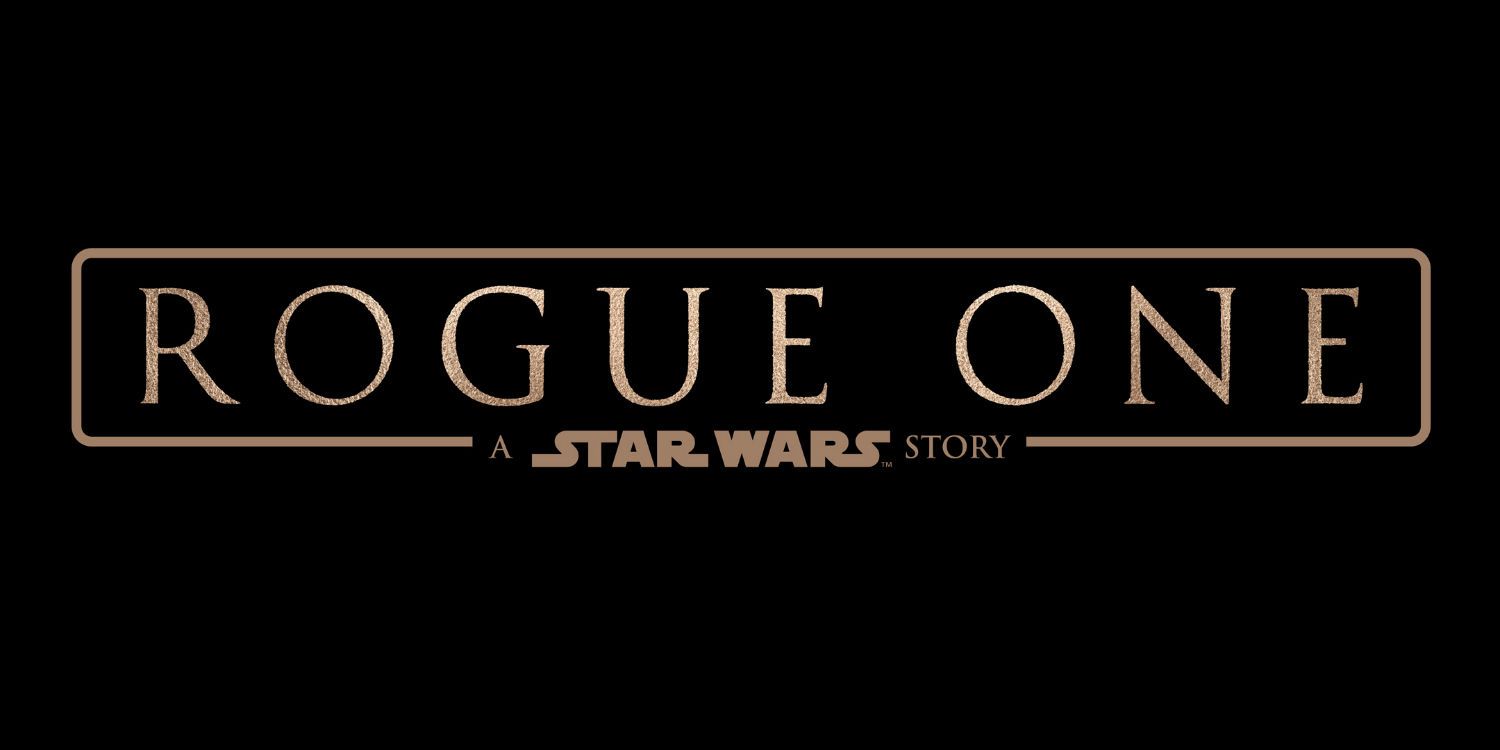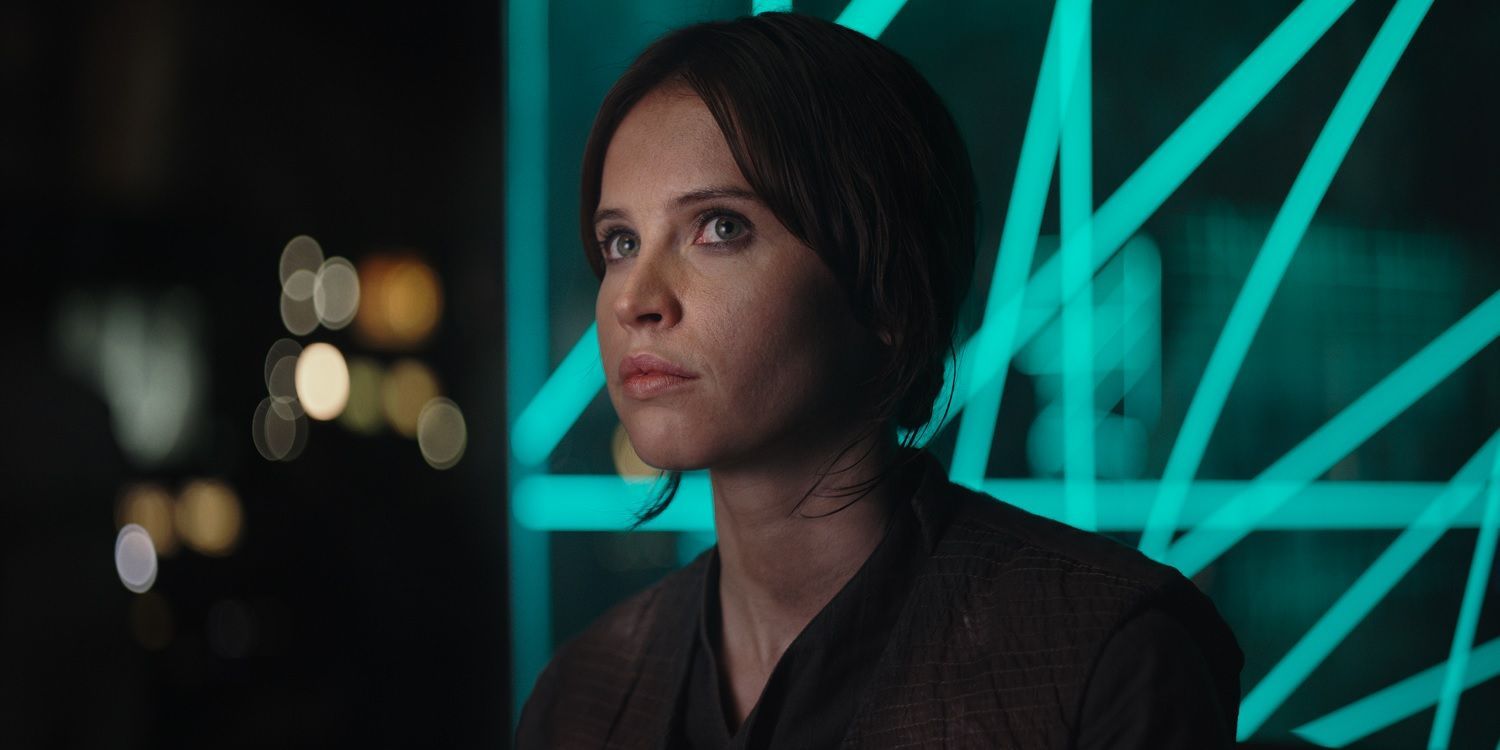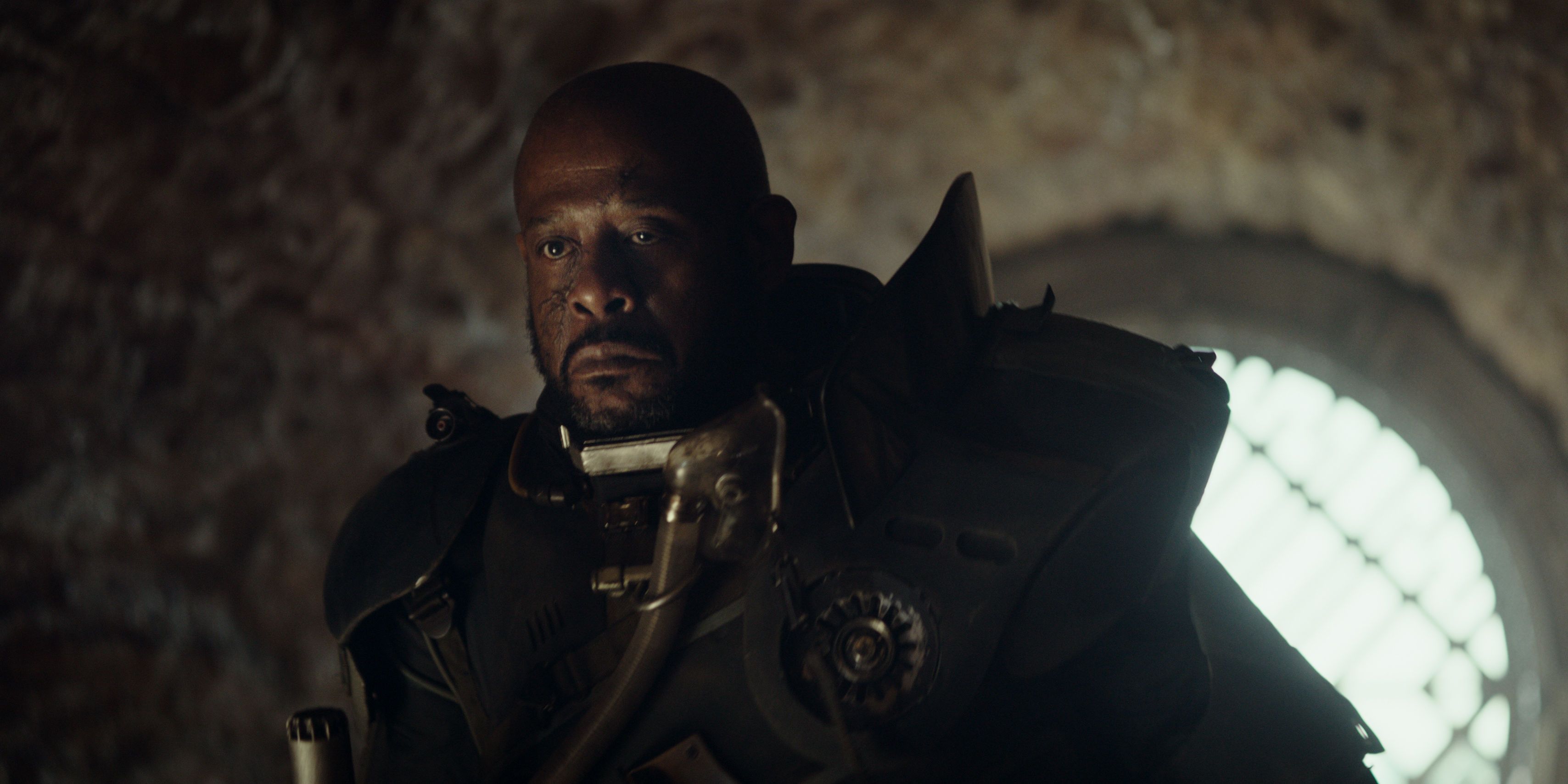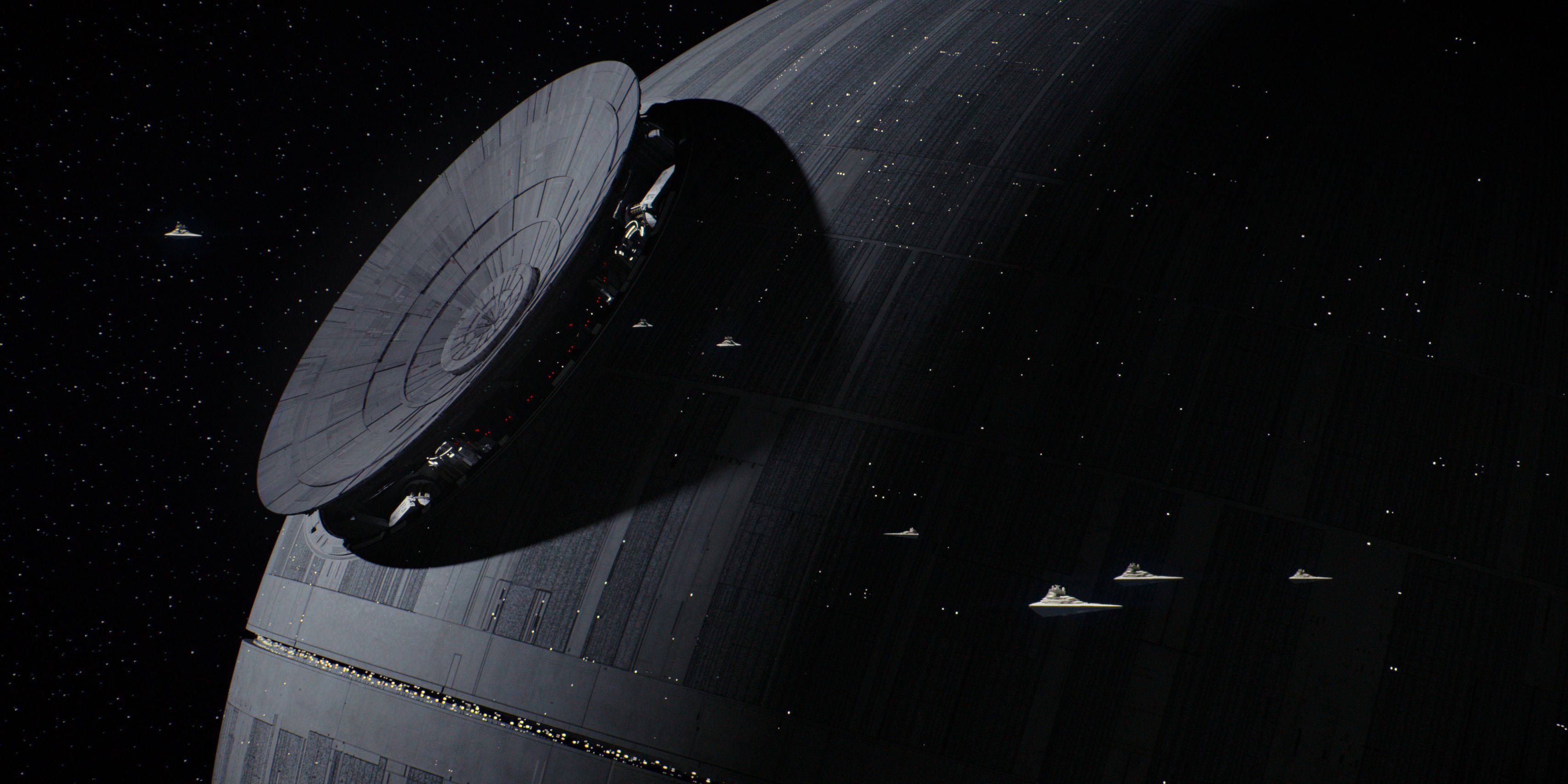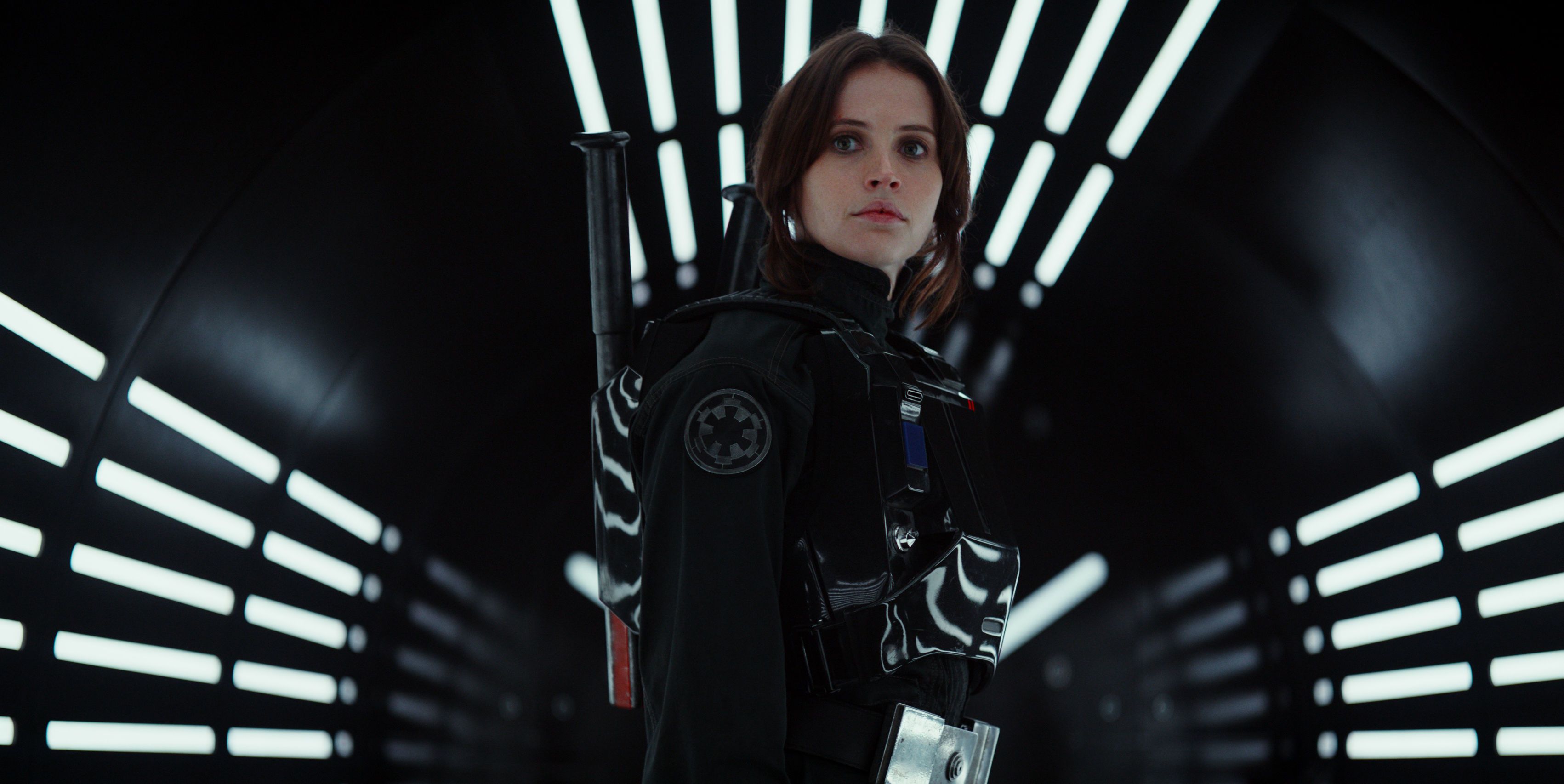With the book now officially closed on Star Wars: Episode VII - The Force Awakens, Lucasfilm has shifted its focus to the next film set in a galaxy far, far away. This December, the studio takes fans back in time to a period before the events of the 1977 original in Gareth Edwards' Rogue One: A Star Wars Story, which focuses on the team of Rebel Alliance fighters that stole plans for the first Death Star. A teaser trailer for the spinoff was recently released, introducing viewers to new heroine Jyn Erso (Felicity Jones) and establishing the tone of an all-out war picture.
The preview certainly made a positive impression online, thanks to its sense of urgency and eye-grabbing imagery. Even before Lucasfilm started Rogue One marketing efforts, it was voted as the most anticipated film of the year, and enthusiasm will most likely increase now. At the same token, an argument can be made that Rogue One still needs to justify its existence. Some have questioned if this is a story that needs to be told, given that audiences will already know the end point by the time they sit in the theater. No doubt, the last time Star Wars prequels were made plays a part in this feeling, but what's been shown so far indicates that Rogue One is a different animal entirely and could very well be the Star Wars prequel fans have always wanted to see.
New Characters And A Story With Stakes
Even though moviegoers knew that Anakin Skywalker would eventually betray the Jedi Order and become Darth Vader, a perceived lack of dramatic tension did not stop The Phantom Menace from being one of the most hyped movies of all-time. Longtime fans could not wait to see the backstory of one of cinema's greatest villains; it wasn't until they saw what George Lucas had in mind that excitement quelled. Yes, the prequel trilogy has its fair share of supporters and merits, but generally the films are widely considered disappointments that failed to live up to their boundless potential.
A fundamental filmmaking flaw in that trilogy is that for movies called Star Wars, there aren't many full-on wars going on for the first two installments. Though the Clone Wars were meant to be the centerpiece of the conflict presented, they don't start until the end of Attack of the Clones, meaning there was very little at stake in the beginning. Prior to the Battle of Geonosis, there wasn't a true threat that needed to be stopped at all costs, and the larger galaxy was experiencing relative peace. Contrast that with Rogue One, and it's readily apparent we are in the middle of the famed Galactic Civil War, with a scrappy bunch of Rebels looking to take down an imposing Empire that has unlimited resources at their disposal. It's the classic "good vs. evil" trope that Star Wars has been built on for years.
With Rogue One unburdened from the Skywalker family saga, there's an opportunity here to flesh out the scope of the struggle and greater detail the effects it had on the universe as a whole. The Rebels obviously acquire the Death Star readouts, yet Edwards overall has creative freedom in showing how things got to that point. Rogue One's only connection to the original trilogy is the Death Star - just about everything else is new. It will be interesting to see the tyranny of the Imperials and resiliency of the Alliance from a fresh perspective, which perhaps can positively change the way one watches the first three movies. Layers can be added to what's come before, and thankfully there's a strong underdog dynamic in place to make it resonate with viewers.
The film also smartly revolves around characters Star Wars fans have never met before. This means that the drama won't just come from whether or not the Rebels accomplish their mission, but who makes it out alive. At first glance, it would seem that just about all of the new faces will perish before the end credits roll since A New Hope does not mention them, but nothing is guaranteed right now. After all, the galaxy is an expansive place, and the Rogue One team could very well be far away on another mission when Luke Skywalker is flying down the Death Star trench (for instance, Mon Mothma is not present during the Battle of Yavin). Viewers don't know the ultimate fates of Jyn and her allies, which ideally will make the action more compelling to watch. Of course, it depends on how Edwards sets up his band of heroes, but the filmmaker is working with a talented cast that should leave their mark on the legacy.
Gareth Edwards and Filmmaking Techniques
A major selling point for The Force Awakens was that director J.J. Abrams was going to film as much in-camera as possible, maximizing the use of practical effects and real locations so the aesthetics of the new films reflected the original trilogy. Obviously, CGI was an extremely valuable tool, but Abrams blended the two techniques very well. He was always enamored with the "lived in" look the previous films had, and he wanted to give the next generation of moviegoers a similar feeling. Even though Episode VII took place in a galaxy far, far away, it still felt like a tangible world, which helped ground it and gave the picture a sense of realism.
Fortunately, Lucasfilm is going to use this method for all their upcoming Star Wars films, including Rogue One. Though the tone of the spinoff is inherently different from the space opera of Force Awakens, Edwards followed Abrams' lead in crafting a tangible universe by marrying the new and old ways of doing things. From the trailer, it's apparent he did as much as he could without the use of digital augmentation. Actors are on sets, the stormtroopers are extras in costumes, and some of the vehicles are models constructed for the film. Even the ships that are most likely CGI (the shot of the Star Destroyer) are the spitting image of their classic trilogy miniature counterparts. Considering things are this seamless for the entire movie - and not just the 90 second teaser - Rogue One will strongly resemble a work in this franchise, making the best use out of all the tools available at the time.
Not only that, Edwards seems to be a great fit for this particular narrative. As the director of 2014's Godzilla, he showed that he possessed a great sense of scale, meaning those sensibilities should carry over nicely to Rogue One. Many fans have been impressed by the imagery on display in the trailer, most noticeably the Death Star reveal and the money shot of Rebel soldiers on the ground, running towards massive Imperial walkers. Though the disparity between the Alliance and the Empire was always apparent in the classic films, it looks like it will be even more underscored in the spinoff, adding weight to the proceedings. Given the series' timeline, the Empire should be in their prime while the Rebels are in their infancy. The heroes have yet to score their first victory at this point, so it's logical for them to be even more outmatched than viewers are used to.
It's true that Edwards has yet to truly establish himself as a bona fide A-list director, but he has proven himself as a rising talent. Though Godzilla was somewhat divisive upon its release, Edwards was more than capable of staging awe-inspiring set pieces. The parachute jump sequence shown in the trailers was infused with horror elements, and the final showdown between Godzilla and the MUTOS earned applause from audiences (two words: atomic breath). One of the calling cards of a Star Wars film is great action, and Rogue One seems poised to add to the franchise's pantheon of memorable battles that stay with moviegoers long after the credits roll. In addition, on his debut Monsters, Edwards took a shoestring budget and successfully blended genre aspects with relationship drama, meaning he has a good read on character dynamics. That bodes well for the development of the team of Rebels the film focuses on.
Conclusion
Justifiably, Star Wars fans get a little uneasy when they hear the word "prequel" get tossed around, and Lucasfilm's reliance on going back to familiar elements for the anthology films has been the subject of some criticism. Still, that doesn't mean Rogue One won't be a worthwhile extension of the universe when it's all said and done. Though the Disney era has only just begun, what fans have seen so far highlights the studio's commitment to getting things "right" and making sure the new films are entertaining and heartfelt. After dropping $4 billion on Lucasfilm, the Mouse House wants to make the most of their investment, and the best way to do that is deliver a quality product.
After the tremendous success of The Force Awakens, Lucasfilm has arguably earned the benefit of the doubt until they slip up with one of the modern movies. It's an exciting time to be a Star Wars fan, with annual releases and so much to look forward to. If Disney's objective is to keep Star Wars alive well past the premiere of Episode IX, then the standalone films are perhaps more important than the saga installments. If Rogue One is well-received, then the possibilities for spinoffs are endless, and it looks like we're well on our way to seeing another good Star Wars film.
NEXT: Rogue One Trailer Analysis
Rogue One: A Star Wars Story opens in theaters on December 16, 2016, followed by Star Wars: Episode VIII on December 15, 2017, the Han Solo Star Wars Anthology film on May 25, 2018, Star Wars: Episode IX in 2019, followed by the third Star Wars Anthology film in 2020.

